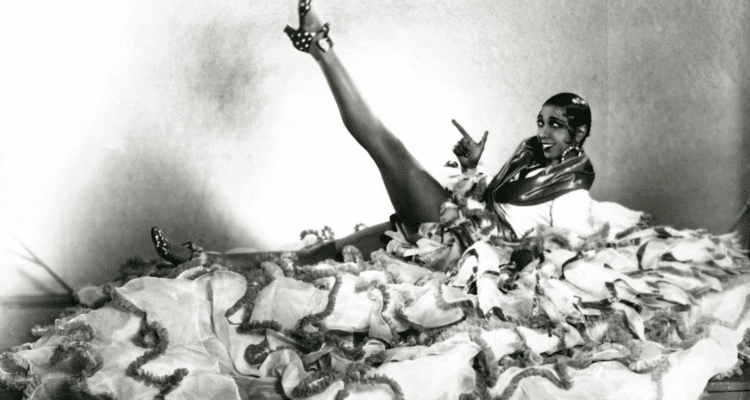They weren’t just muses—they were forces. And Paris remembers them in echoes and bronze.
Forget the tired trope of the Parisienne lounging in a café waiting to be painted. The women of Paris were building empires, starting revolutions, changing laws, creating art, breaking hearts, and rewriting the very language of power—sometimes while wearing silk gloves. They moved in shadows and in salons, behind barricades and on stage. And The Socialites are here to introduce you to the women who didn’t just live in Paris—they shaped it.
Olympe de Gouges (1748–1793) – The Feminist Before Feminism
A playwright, political philosopher, and audacious voice during the French Revolution, she penned the “Declaration of the Rights of Woman and the Female Citizen” in 1791—a bold retort to the male-only version passed just two years earlier. Her demand? That women be recognized as equals. The price? The guillotine.
Where to remember her: Place du Panthéon (she’s not interred, but she should be). A plaque on Rue Servandoni honors her legacy.
Joséphine Baker (1906–1975) – The Spy Who Danced
Born in St. Louis, she conquered Paris with her banana skirt and brilliance. But she was more than a sensation—a Resistance agent, a civil rights activist, a mother to twelve adopted children, and the first Black woman inducted into the Panthéon. She used her fame as a weapon for justice. Her courage? Legendary.
Where to go: Her crypt at the Panthéon. Also: Place Joséphine Baker in the 13e.
Colette (1873–1954) – The Scandalous Scribe
She shocked, seduced, and scandalized with her fiction, her lovers (both genders), and her refusal to play the role of proper woman. Her Claudine novels were deliciously subversive, and she fought tooth and claw for women’s intellectual agency. First woman in France to receive a state funeral.
Trace her footsteps: Palais-Royal, where she once lived; Rue de Beaujolais.
Simone de Beauvoir (1908–1986) – The Philosopher Who Broke the Spell
She wasn’t just Sartre’s partner. She was a philosopher, novelist, and trailblazing feminist whose “The Second Sex” cracked the illusion of femininity wide open. Every major feminist thinker since owes her a glass of red and a footnote.
Where to honor her: Montparnasse Cemetery, beside Sartre. Café de Flore, where her ghost still lingers over cigarettes and Camus.
Marie Curie (1867–1934) – The Genius in the Lab Coat
Born in Poland, but the first woman to win a Nobel Prize—and the only person to win in two different sciences—made Paris her intellectual home. She discovered radium, coined the term “radioactivity,” and changed science forever. Also: zero patience for ego.
Homage: Musée Curie (5e) and her lab at the Sorbonne. She’s interred at the Panthéon, wrapped in lead.
Louise Michel (1830–1905) – The Red Virgin of Montmartre
Teacher, anarchist, revolutionary. One of the boldest figures of the Paris Commune, she fought on the barricades, was exiled, and never stopped defying authority. Known for her uncompromising vision and fierce empathy, she was both feared and adored.
Where she echoes: Montmartre’s Rue Louise Michel. And in every act of rebellion in Paris since.
Delphine Seyrig (1932–1990) – The Feminist on Film
More than a screen siren—she was a radical cineaste who championed women’s voices on- and off-screen. Co-founder of the Centre audiovisuel Simone de Beauvoir, she used cinema to confront the patriarchy and archive women’s struggles and joys.
Cinematic touchstones: See her in Jeanne Dielman or Last Year at Marienbad. Visit the Centre Simone de Beauvoir (11e) for rare feminist media.
George Sand (1804–1876) – The Cross-Dressing Literary Icon
Born Amantine Lucile Aurore Dupin, she wrote under a male pseudonym, smoked cigars, wore men’s clothes without apology, and outwrote most of her male contemporaries. Her salons hosted Chopin, Liszt, and Flaubert. Her novels? Bold, emotional, and decades ahead.
Relics: Her house near Jardin du Luxembourg. Rue George Sand in the 16e.
Édith Piaf (1915–1963) – The Voice That Cried for Paris
From street singer to global icon, Piaf was Paris—raw, trembling, full of ache and fight. Her voice was forged in loss and lit by love. Despite tragedy, addiction, and illness, she sang. And sang. And sang.
Trace her: Maison de la Piaf in Belleville, and her resting place at Père Lachaise.
Simone Veil (1927–2017) – The Lawmaker of Liberation
A Holocaust survivor who became France’s Minister of Health and fought to legalize abortion in 1975, facing fierce misogyny and public vilification. She stood firm. She won. And became one of the most respected political figures in French history.
Legacy: Interred at the Panthéon with full honors. Streets, trams, schools now bear her name—and her resolve.
Bonus: The Nameless Ones
The laundresses of the Seine, the women of the barricades in 1830 and 1848, the resistantes who passed messages in loaves of bread, the artists who never signed their work, the nannies who raised revolutionaries, the ouvrières who kept factories running and history turning.
They may not have statues, but Paris walks on their stories.
Because in Paris, women weren’t just accessories to history—they were its architects.
And their voices? Still echo down every alley, across every bridge, and inside every salon.
—The Socialites


